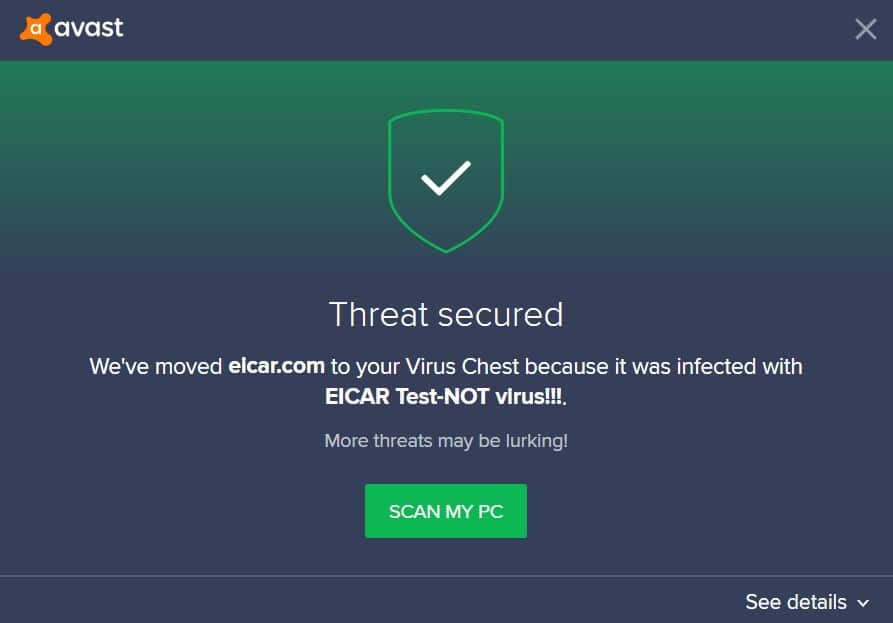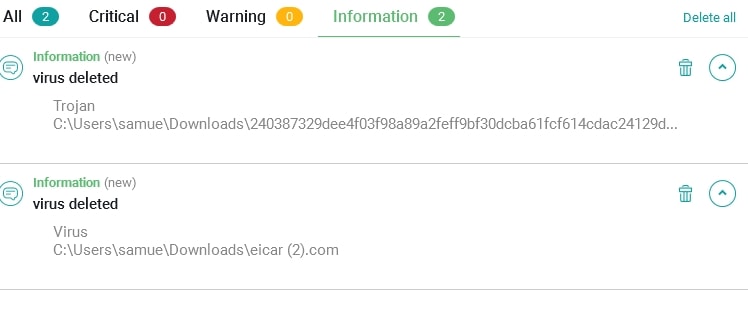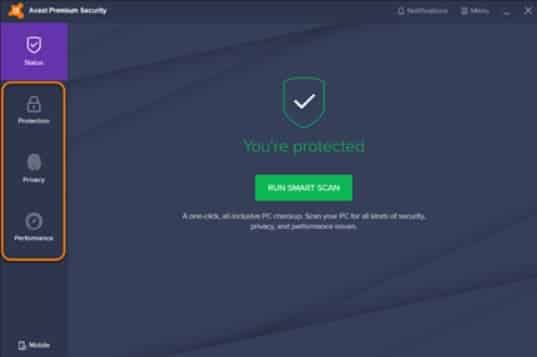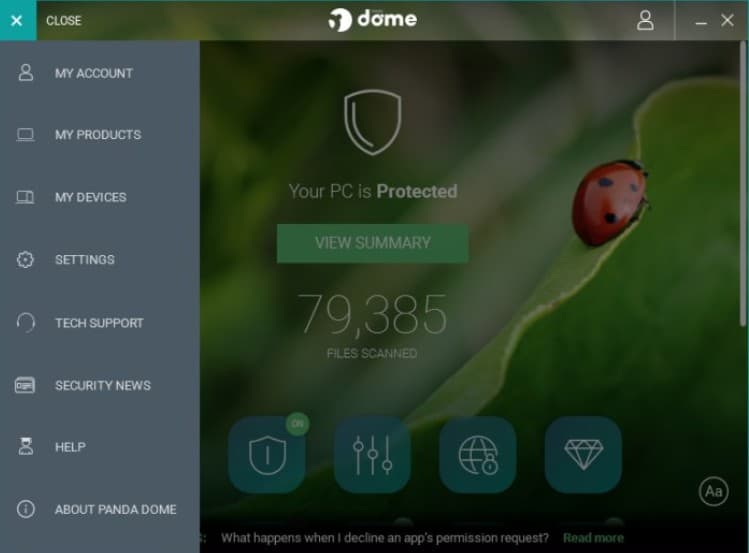
Struggling to make sense of which antivirus software to go for? This article will help you discover which one is best, Avast or Panda.
Avast protects 425 million consumers worldwide, while Panda has over 30 million customers. Why do so many people opt for Avast? I will compare the programs in important categories, such as malware protection, features, cost, and performance, to help you get a better idea of which one is right for you.
Do you just want to know the answer? Panda is my winner. Although Panda operates on a smaller scale than Avast, It is mighty in its performance and protection rates. It doesn’t use traditional scanning methods but instead employs a cloud-based, remote server, so the impact on your device’s performance is minimal. It doesn’t stop there; Panda’s vast privacy and security features are outstanding and give it the edge over Avast.
Want more information? Read on for the full comparison.
Summary: Avast vs Panda
Avast
- Ransomware protection
- Sandbox tool
- Password manager
Panda Dome Premium
- Premium VPN
- Data and privacy protection
- Update manager
| Feature | Avast Premium Protection | Panda Dome Premium |
|---|---|---|
| Antivirus and antispyware | ✔ | ✔ |
| Firewall | ✔ | ✔ |
| Webcam protection | ✔ | ✔ |
| Password manager | ✔ | ✔ |
| Anti-phishing | ✔ | ✔ |
| Ransomware protection | ✔ | ✔ |
| Banking and payment protection | ✖ | ✔ |
| Parental control | ✖ | ✔ |
| Network attack protection | ✔ | ✔ |
| Encrypted storage | ✖ | ✔ |
| Automatically update apps | ✔ | ✔ |
| VPN | ✖ | ✔ |
| PC cloud backup | ✖ | ✔ |
| File shredder | ✔ | ✔ |
| Performance optimization | ✖ | ✔ |
| Identity theft protection | ✖ | ✔ |
| Run suspicious apps in sandbox | ✔ | ✖ |
BEST DEAL FOR AVAST:Get up to 70% off Avast and all of its premium security features.
BEST DEAL FOR PANDA:Save 50% on Panda Dome Premium which also includes a VPN to protect your online activity.
Background
Avast
Avast is a Czech multinational cybersecurity company, with its headquarters in Prague. It has more than 435 million active users and held the second-largest market share among antivirus software companies in April 2020. Avast was founded in 1988, and in 2016, acquired competitor AVG for $1.3 billion (GBP £944.1 million). With the combination of large-scale antivirus software companies, it is able to research and develop software to stop the most complex threats.
Of note was its acquisition of AVG in 2016, which allowed Avast and AVGs products to share the best features they each had to offer. In late 2020 it was acquired by NortonLifeLock (formerly Symantec), the makers of Norton Antivirus, although the deal is subject to regulator approval which is yet to happen.
Panda
Panda Security has more than 30 million users worldwide, operating on a smaller scale than some competitors. Having launched in 1998, it is ranked amongst the 500 fastest growing companies in Europe since 1997. The company has expanded its focus to advanced cybersecurity services, so you expect its antivirus software to be top-notch.
Pricing and compatibility
With so many different products, working out which one offers the best value can be difficult. And while both Avast and Panda offer a free antivirus that will protect you against common threats, these versions might not stand up against more complex attacks.
With Avast Premium Security, you can protect one PC or one Mac, or cover for 10 devices. This could perhaps be annoying for the consumer that wants to protect only a couple of devices, as Avast doesn’t offer much flexibility. Its Premium Security plan costs $69.99 (GBP £50.81) for one Windows device.
At the time of writing, Avast currently has no discounts for first-time sign-ups, but if you purchase for subsequent years then there are cheaper prices available to you. Avast backs its products with a 30-day money-back guarantee. Its 10-devices plan is compatible with Windows, Mac, Android, and iPhone/iPad.
| Avast Free Antivirus | Avast Premium Security - 1 PC | Avast Premium Security - 1 Mac | Avast Premium Security Multi-device - 10 Devices |
|---|---|---|---|
| Free | $69.99 per year | $59.99 per year | $89.99 per year |
Panda offers a free antivirus as well as many paid options, with its highest tier plan costing $166.99 (GBP £121.24) a year. Products in between include Essential, Advanced, and Complete plans. In its Premium product you can expect 24/7 tech support along with a premium VPN. It’s important to mention that Panda Dome Premium is only for one device, but you have the option to add more devices at checkout.
Panda is offering a 50 percent discount on all of its products for the first year. That means Panda Premium comes in at $83.49 (GBP £60.62) for your first year. Panda Premium is also compatible with Windows, Mac, and Android devices. Want to try before you buy? Panda offers a one-month trial, so you’re not tied to any subscription service.
| Panda Free Antivirus | Panda Essential | Panda Advanced | Panda Complete | Panda Premium |
|---|---|---|---|---|
| Free | $58.99 per year | $70.99 per year | $106.99 per year | $166.99 per year |
Effectiveness against malware
Malware is responsible for a variety of threats that can cause nasty issues for your device. As such, antivirus software that’s effective in protecting your device is essential.
I ran some of my own tests to see which one came out on top. I downloaded malware samples from EICAR and used three live samples.
| Test File | EICAR Sample 1 | EICAR Sample 2 | EICAR Sample 3 | EICAR Sample 4 | Live Sample 1 (Adware) | Live Sample 2 (Trojan) | Live Sample 3 (Trojan) |
|---|---|---|---|---|---|---|---|
| Avast | Allowed | Allowed | Allowed | Allowed | Blocked | Blocked | Blocked |
| Panda | Blocked | Blocked | Allowed | Allowed | Blocked | Blocked | Blocked |
Avast and Panda both blocked the three live samples tested in real-time and successfully protected my device from adware and Trojans. For the EICAR samples, Avast allowed all samples when downloaded over HTTPS, but blocked them on HTTP. This is likely due to Avast not scanning HTTPS web traffic, which itself can create security holes.
Panda blocked two of the samples but allowed the others up until the EICAR files were unzipped. From my own test results, Panda is the winner here.
Next up, I looked at tests from independent labs, AV-Test and AV-Comparatives. Both provide regular data and information on malware protection that is easy to read and understand.
AV-Test’s most recent protection report gives Avast a 100 percent score in May 2020 and June 2020. This test was performed using 339 samples and was done in real-time. Panda was not tested by AV-Test at this time.
AV-Comparatives’ most recent real-world protection test summarizes the data captured from February 2020 to May 2020. Avast earned a 99.7 percent score for this period, which ranks about third among competitors. Panda was given a protection rate of 99.9 percent, which puts it second amongst competitors and slightly ahead of Avast.
If you’ve used antivirus software in the past, you’ll know that when it mistakenly flags something as a threat, it can be annoying. AV-Comparatives monitored how many false alarms Avast and AVG flagged during this period. Avast came out with eight false alarms and Panda scored 23 false alarms, so quite a big difference here.
Panda proves to be the most effective in dealing with malware, which is shown through my own tests and independent tests. It blocked more sample files in my own tests and came out on top in AV-Comparatives’ Real-World Protection Test. Panda is my winner.
Impact on PC performance
Antivirus software runs scans in the background, to make sure it’s protecting your device in real-time. This means it can affect your CPU utilization and memory and can cause your device to slow down. Antivirus software needs to have minimal impact, allowing you to do what you normally do without any issues. To test out which has the least impact, I ran a full scan and quick scan and monitored what my system was doing while no scan was present.
| Test Type | Full Scan Time (minutes) | Full Scan Items Scanned | Control CPU Utilization % (no scan) | Control Memory Utilization % (no scan) | Control Disk Utilization (MB/s) (no scan) | Quick Scan CPU Utilization % | Quick Scan Memory Utilization % | Quick Scan Disk Utilization (MB/s) | Quick Scan Time (seconds) |
|---|---|---|---|---|---|---|---|---|---|
| Avast | 60 | 1870000 | 32 | 72 | 28 | 90 | 72 | 300 | 146 |
| Panda | 40 | 241385 | 19 | 85 | 27 | 38 | 87 | 384 | 3 |
Avast took 60 minutes to complete a full scan and Panda just 40 minutes. Panda’s quick scan was also impressive, at just three seconds. Panda uses cloud-based technology to scan your device, so does not rely heavily on your system’s resources.
| Test Type | Control CPU Utilization % (no scan) | Control Memory Utilization % (no scan) | Control Disk Utilization (MB/s) (no scan) | Full Scan CPU Utilization % | Full Scan Memory Utilization % | Full Scan Disk Utilization (MB/s) |
|---|---|---|---|---|---|---|
| Avast | 32 | 72 | 28 | 42 | 73 | 5801 |
| Panda | 19 | 85 | 27 | 46 | 80 | 284 |
This next table shows how my system resources were impacted while no scan was present and when a full scan was running. Panda used just 19 percent CPU utilization when no scan was present, compared to Avast at 32 percent.
I wanted to further verify my data and check out some of the latest research from AV-Comparatives. AV-Comparatives looks at antivirus performance and tests common tasks a user might carry out. These are:
- Downloading files
- Browsing websites
- File Copying: first and subsequent run
- Installing and uninstalling applications
- Archiving and unarchiving
- Launching applications: first and subsequent run
From AC-Comparatives April 2020 data, Avast scored a fast score for launching applications and downloading files. Everything else was rated as very fast. Panda recorded a fast score for archiving and unarchiving. Everything else was rated as very fast.
Panda’s full and quick scan makes it much more efficient. Panda also fared slightly better in the independent performance tests, so Panda is my winner in this round.
Features
Antivirus software tends to pack a lot into its products. You can expect a whole variety of features that are aimed to keep you safe online. The features of both programs are listed below.
- Secure passwords
- Block malware
- Block spam and phishing emails
- Safer shopping
- Webcam protection
- Lockout hackers with an advanced firewall
- Scan for wi-fi security weaknesses
- Get an extra layer of ransomware security
- Safely run suspicious apps
- Permanently shred sensitive files
- Automatically update apps
- Install on all your devices
- Update manager
- Premium VPN
- Premium support
- Parental controls
- Data protection
- Cell phone locator
- Password manager
- Tuneup
Here are the best features from both:
- Automatically update apps: Out-of-date software is one way hackers can get into your device, so this tool automatically updates and searches for the latest releases online for all your apps.
- Safer shopping: This tool prevents you from being sent to fake sites, which means hackers cannot access your passwords or any other private information.
- Sandbox: This sandboxing tool lets you open any files in a safe environment before you run them on your PC. This prevents any hacker from using files as a means to target your device.
- Premium VPN: Browse the internet anonymously and privately, as Panda Dome Premium VPN provides 22 virtual locations for you to access all internet content, without limits, wherever you are.
- Cell phone locator: Lost your mobile? Panda can help you locate your lost or stolen device with this tool easily, saving you the worry.
- Tune up: Keep your PC running like new by optimizing its performance with this computer tune up tool.
It’s clear to see there is an abundance of features included with both. Panda’s premium VPN and cell phone locator will be useful to many users.
Signup and installation
Installing your software doesn’t need to be a daunting process. Antivirus can be installed on your device within minutes.
Avast’s checkout was easy. After entering a few personal details and payment, I received a download link. The checkout page is simple and highlights the main features of the software you are purchasing which is a nice reminder. There’s no option to add on additional devices or other products, which could be frustrating to some users.
Panda gives you the option to increase the number of devices covered and years of subscription on one page. This means you don’t need to keep navigating the website and switching between pages. You are told that there will be an automatic renewal, so you can set a reminder if you do not wish to purchase again.
How easy is the interface to use?
The interface may not be a primary consideration, but having easy-to-use software makes it simple to navigate if anything happens to your device.
Avast’s interface has a very clear layout. The main page tells you that you’re protected and you can run a scan in one click. To navigate to other features, you have to select the tabs on the left-hand panel. One downside to the Avast design is that you have to dig deeper to find the advanced settings.
The main dashboard for Panda Premium is customizable, which is a nice touch. It allows for easy navigation via icons at the bottom of each page and on the left panel. Here you can view products or devices. You can also easily navigate to tech support, provided you have a Panda Premium subscription. This allows you to interact with a technician straight away.
Customer support
Antivirus software companies typically provide support throughout the length of your subscription and Avast and Panda are no different.
Avast allows you to contact someone through live chat and email. If you prefer to speak to someone on the phone, it comes at an extra cost. If your query isn’t urgent, there are many detailed help guides on Avast’s website. You should be able to quickly find the answer you are looking for.
With Panda Premium, you get 24/7 support. Panda prides itself on an excellent support team, and you can call them with a broad range of technical needs. There is unlimited assistance with problems such as social media privacy setup, optimization, configuration, and troubleshooting issues. The level of support Panda offers is probably the best around.
Which antivirus is more user-friendly?
Avast’s interface is not only intuitive but also designed to be user-friendly, regardless of your technical expertise. Its clean layout and straightforward options make running scans and managing settings a breeze, instilling a sense of comfort and confidence in your ability to navigate the software.
Panda, while also user-friendly, has a more complex interface that might be less intuitive for some users, particularly those who are not as tech-savvy.
Which antivirus has better speed and performance?
When it comes to speed and performance, Panda takes the lead. Its efficient use of system resources ensures that your computer remains responsive, even during scans or when the software is running in the background, providing a reassuring sense of system stability.
On the other hand, Avast has been noted to have a more significant impact on system speed, especially during full system scans. This is a factor to consider if you prioritize a fast-performing computer.
Which antivirus offers better user privacy?
For those who value their privacy, Panda is the clear winner. With a strong focus on user privacy and robust features to protect personal data, Panda provides a sense of security and protection that is hard to beat.
Avast, while also providing privacy features, has faced criticism in the past for its data collection practices. This has raised concerns among users who prioritize privacy, making Panda a more favorable option.
Avast vs Panda: Conclusion
As my findings show, Panda outperforms Avast in all areas, including malware protection, performance, pricing, and usability. Panda may be small in comparison, but often, it is overlooked among its competitors. Panda offers an excellent customer service network, along with comprehensive features that ensure your safety and protection online.
See also:






